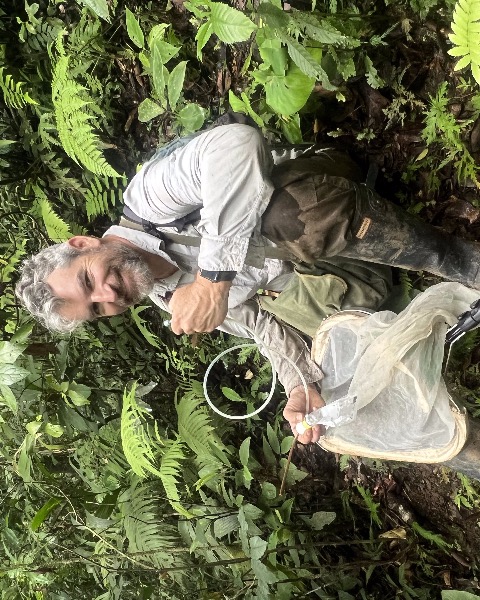Student 10-Minute Presentation
Systematics, Evolution, and Biodiversity
Student
Student Competition
Turning over a new leaf: A survey of neotropical parasitoid Hymenoptera in leaf litter

Robin P. Marquez (he/him/his)
Undergraduate Student
University of Central Florida
Winter Park, Florida- DH
Diler Haji
University of Connecticut
Storrs, Connecticut - ET
Elijah Talamas
Florida State Collection of Arthropods
Gainesville, Florida - MG
Michael W. Gates (he/him/his)
Research Entomologist
USDA-ARS
Washington, District of Columbia - RK
Robert Kula
USDA-ARS
Washington, District of Columbia - TS
Ted R. Schultz
Research Entomologist
Smithsonian Institution
Washington, District of Columbia 
Matthew Buffington
Research Entomologist
USDA-ARS
Washington, District of Columbia.jpg)
Jeffrey Sosa-Calvo
Entomologist
Smithsonian Institution
Silver Spring, Maryland
Robert L. Kresslein
Post-Doctoral Researcher
USDA-ARS
Ellicott City, Maryland
Presenting Author(s)
Co-Author(s)
On a changing Earth, human-driven ecosystem degradation will test the ability of conservation planning to identify and target areas of concern. Nowhere is that truer than in the Neotropical forests of South America, where the majority of the world’s species dwell. Most of these species are unknown to science and their ecology remains largely mysterious, especially within leaf litter, which harbors nearly twice as many species as the ecosystem above. Some of the least known organisms belong to the micro-parasitoid fauna of the order Hymenoptera, which have rarely been studied in the context of leaf litter. We believe this speciose group not only provides economic benefits for agriculture and biological control in the U.S. but can also serve as indicators of arthropod diversity in areas of concern around the world. In this study, parasitoid wasps were separated from samples acquired during collection events across Neotropical sites (Brazil, Panama, Guyana highland, Guyana lowland, Peru, and Colombia) from 2005 to 2011. Samples were taken using Winkler extraction and sorted to morphospecies. Analytics for species accumulation, richness, and turnover were done using Vegan (R package). The species accumulation curve for all sites is clearly increasing rapidly without a plateau, indicating that the diversity of parasitoid Hymenoptera within the leaf litter is significantly higher than other insect taxa. From these results, we can explore broad trends of parasitoid biodiversity between sites, including species homogeneity and endemism, for a poorly known but highly speciose group.

.png)

